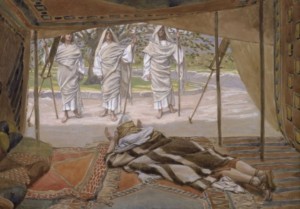Next Tuesday is the seventeenth of Tamuz, commemorating a handful of tragedies in Jewish history starting with the shattering of the Tablets following the sin of the Golden Calf. A careful examination of Torah chronology reveals that there may be one more major event that took place at this time, and it involves the Ten Plagues in Egypt. While the Torah describes in great detail how the Ten Plagues came about, it says very little about their timing. All we know is that the final plague upon the firstborn was on the fifteenth of Nisan. Can we work backwards from this point and create an exact timeline of when the Ten Plagues occurred? Continue reading
Tag Archives: Eduyot
Will Mashiach Come This Year?
The Torah speaks of a new star appearing in the night sky to herald the coming of Mashiach. Scientists predict that such a “star” may indeed appear later this year – could it be the long-awaited “Star of Jacob”? And how does this tie in with other ancient prophecies about the End of Days, and major events happening around the globe today? Find out in the class below!
For the original class on the End of Days from 2021, please see here.
For the ‘Third Rome’ series, see here.
For the article on the significance of the solar year, please see ‘The Kabbalah of Solar’.
Perspectives on Hell

‘Abraham and the Three Angels’ by James Tissot
This week’s parasha, Vayera, begins by telling us that following Abraham’s circumcision, he was “sitting at the entrance of the tent as the day was hot.” (Genesis 18:1) The Ba’al HaTurim (Rabbi Yakov ben Asher, 1269-1340) offers several interesting possibilities as to why the Torah had to mention this seemingly superfluous detail. One of the answers is that k’chom hayom, the heat of the day, is actually alluding to the heat of Hell. As is characteristic of the Ba’al HaTurim, he proves it mathematically, pointing out that the numerical value of k’chom hayom (כחם היום) is equivalent to “this is in Gehinnom” (זהו בגיהנם), when including the additional kollel.
The Ba’al haTurim also draws on a Talmudic teaching (Eruvin 19a) that Abraham sits at the “entrance” to Gehinnom and pulls out all who are circumcised from there! There is an exception to this, though, for being “circumcised” is more than just the one-time passive active of getting circumcised. A man also has to “uphold” his circumcision, meaning not to abuse that organ. Anyone who was promiscuous over the course of their life has their foreskin grow back in Gehinnom—and those people Abraham does not save!
That said, what exactly is Gehinnom? Is it the equivalent of “Hell”? Does Judaism have a concept of such an eternal place of torment? It is common to hear that Judaism does not have such a notion, and that the Tanakh does not describe such a place. Yet, later Jewish literature is actually quite rich with discussion of a hellish torment of some sort for certain wicked individuals in the afterlife. What is the truth? Continue reading
